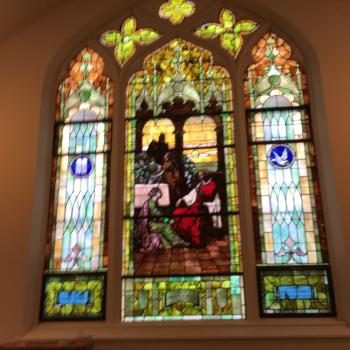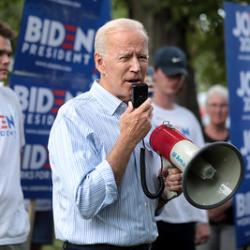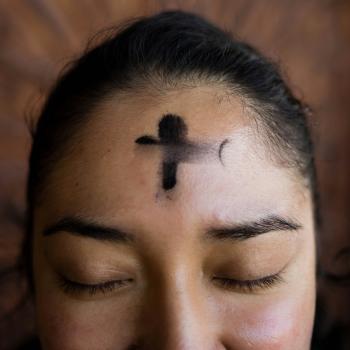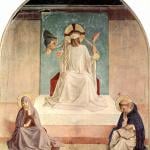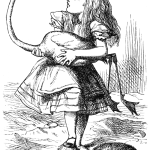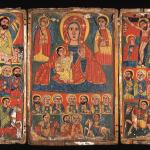In his book, The Church in the Barrio, Robert Treviño traces the history of the relationship between the Mexican and Mexican American community and the Catholic Church in Houston from the 1910s to the 1970s. In so doing, Treviño explores the customs and traditions of the nascent Mexican community in the city and how its self-understanding as a group defined its Catholicism and its relationship with the Church hierarchy. The chief point of Treviño’s book stems from the concept of the “ethno-Catholicism” expressed by the Mexican community in Houston. He calls ethno-Catholicism “a religious style that blurred the line between the sacred and the secular and gave singular expression to the people’s identity.” [1]The thrust of his argument is that this “brand” of Catholicism, so to speak, of the Mexican American community maintained and nourished its identity in a foreign land in the midst of economic hardships and discrimination. Also, Treviño is heavily concerned with how this ethno-Catholicism was received by the Church hierarchy and how it ultimately shaped the relationship between the Church and the Mexican faithful. My concern in this essay is to use Treviño’s historical survey to explore four aspects of the ecclesial reality he describes, the first of which is the experience of the Mexican community in Houston based on their condition as migrants and how its collective understanding and identity developed overtime given its changing social and economic backdrop. Second, I will look at the Church hierarchy in Houston and how it progressively changed its attitude towards the Mexican community. Third, I will bring these two communities together—the Mexicans and the Church hierarchy—along with their parallel self-understandings, and I will make some remarks about the nature of their confluence. Finally, I will provide some closing arguments in support of a constant renewal in the Church’s ministry to different groups that have special needs.
Memory and Identity of the Mexican American Community
When we speak of the Mexican community in Houston and some of the aspects of its ethno-Catholicism, it is incumbent on us first to understand its condition as migrant. Only in this proper framework that can we gain a clearer understanding of the reasons that prompted the Mexican community to constantly preserve its identity through its religious expression, which was just one of the ways to achieve that end. The effect one’s self-understanding caused by the experience of migrating from one’s homeland to another place cannot be understated. The migrant assumes the role of an exile and a foreigner in a strange land. He departs and leaves behind all that is familiar and partly constitutes his existential circumstance. The migrant leaves behind familiar places, smells, sounds, tastes, and people that shaped his personality, which, in turn, shaped his understanding of himself. Thus, when the context changes, and what used to be familiar and bring comfort no longer exists, the migrant may find himself lost, perhaps confused by an urgent need to adapt to the new context and redefine himself within that framework. He feels the need to reform his identity and to answer the fundamental question: “Who am I now?” I believe that it is essential to understand this crisis of identity and security in order to appreciate the particular characteristics of ethno-Catholicism that arise in the Mexican community.
The ethno-Catholicism lived by Mexican immigrants and Mexican Americans in Houston was mainly characterized by a strong sense of community with tightly knit family and communal relationships that extended beyond the boundaries of their churches and parish buildings. In addition, there was no dividing line between the secular and the sacred for them. Rather, their religion flowed continuously out from the confines of the church into their daily lives; there was no real separation of religion from politics or other spheres of activity. To cause such a break, as a parishioner noted, would mean for them to “stop being who [they] are.” [2]At first glance, this aspect of ethno-Catholicism may come across as a positive element. After all, the Second Vatican Council points out that “one of the gravest errors of our time is the dichotomy between the faith which many profess and the practice of their daily lives.” [3] However, precisely because there was no differentiation between faith and other aspects of life within the Mexican community, some were led to believe that because they were leading relatively good lives they were fairly “good” Catholics. Not surprisingly, Sunday Mass attendance and the importance of sacraments, such as Confirmation, became secondary within ethno-Catholicism. [4] The strong sense of community in the Mexican and Mexican American communities was expressed in their religious festivities that served not only to raise funds for their parishes or to commemorate a popular biblical story. These occasions also facilitated the strengthening of the family and communal ties. These expressions of faith carried within themselves customs and traditions from Mexico, which constituted the memory of the Mexican community. Thus, these events served another function: they renewed their identity as Mexicans living away from their homeland. These were opportunities for the community members to remember who they were and from where they came from.
Before proceeding further, it may be important to note some socio-economic factors that the Mexican community encountered when it first settled in Houston that endured in subsequent years during its establishment in the city. Mexicans, as well as blacks, were frequently victims of hostility during the times of racial segregation. They were denied entry to public places and even many Anglo American Catholic parishes refused to allow Mexicans to enter their churches. [5] In many instances, the Church in Houston seemed to go along with this relegation of the Mexican community, which drew strong criticism from the Mexicans themselves. They were also denied good education [6] and were, as a result, immersed in poverty and destitution that ultimately forced them to take jobs in which they were exploited by their employers. [7] Discrimination made them affirm their identity even more vehemently. This constant and strong affirmation of their identity found expressions in the practices of their Catholicism in ways mentioned above.
To understand better the reasons for this response on the part of the Mexican and Mexican American community, it may be worth outlining how individuals come to some self-understanding. As T. Howland Sanks observes, “the self-understanding of a human grouping is analogous to the self-understanding of an individual.” [8] The way a Mexican immigrant in Houston understands himself, therefore, is analogous to how the Mexican Catholic community in Houston understands itself. Sanks goes further and outlines three steps by which individuals develop their self-understanding. First, we come to know and understand who we are by differentiating ourselves from others. For example, “I am a female and not a male.” This differentiation can also take place based on how others treat us. If I am an actress or celebrity of some sort, I will come to understand who I am based on the expectations and criticisms others have of my performance, career, or personal life. When we apply these principles to the Mexican and Mexican American community in Houston, the factors that affect their self-understanding as a community may start to become self-evident. I have already mentioned how Mexicans defined themselves in the negative sense, especially given their minority status within the U.S. population: “I am Mexican not a native-born American.” In many respects, their condition as migrants in the United States was the same as that of European immigrants; however, the way Mexicans were treated by whites and even by some in the Church hierarchy in Houston forced them to understand themselves as second-class citizens. This understanding, in turn, deepened their need for ethnic solidarity within their community and delayed their process of assimilation to the American society in comparison to their European counterparts.
Another way we gain a deeper understanding of ourselves is based on our family history and ethnic background—where we come from and who we are. Consequently, the Mexican community in Houston not only understood itself as being subordinated to local social and economic structures, but at the same time, it understood itself as distinctively Mexican, based on its heritage—the customs and traditions that constituted their existence as a community. It is no surprise, then, that in order to counter the sense of subordination imposed by the social structures in place, the Mexican community felt the need to reinforce and strengthen their identity by recovering the traditions that made up their memory as a community. Accordingly, we come to an understanding of ourselves based on a vision, a future goal of who we want to be. In the case of the Mexican American community, this last step did not take place until perhaps the 1960s and 1970s in the midst of the Civil Rights Movement. The Mexican community had already established itself strongly in Houston with a younger generation that was born and raised in the United States. It was during this time, Treviño argues, that the Mexican-American community reached a climax of self-definition. [9] Catalyzed by the Civil Rights Movement, the community had come to the realization that its work conditions were not humane, that their wages were unjust, and that their schools were inadequate. In addition, the Mexican community had realized the important role it played in society and the local economy, which allowed it to form a vision of itself in realizing its own potential as a body and the executing power it had to change the surrounding circumstances. It was during this “climax of self-definition” that the Church hierarchy took more decisive steps to minister and serve the needs of the Mexican community, a process that had been developing since the first years of the Mexican community’s establishment in Houston.
[1] Robert Treviño, The Church in the Barrio: Mexican American Ethno-Catholicism in Houston. (Chapel Hilll: The University of North Carolina Press, 2006) 11.
[2] Treviño 77.
[3] Gaudium et Spes, 43
[4] Treviño 59.
[5] Treviño 86.
[6] Treviño 87.
[7] Treviño 93.
[8] T. Howland Sanks, Salt, Leaven and Light: the Community Called Church (New York: Herder & Herder, 1992) 25.
[9] Treviño 176.




